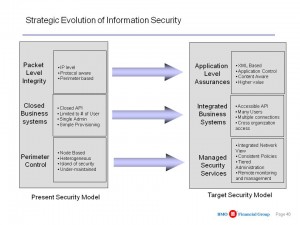By Shane Harris sharris@nationaljournal.com April 4, 2007
Government Executive
In 1999, program managers at the National Security Agency knew they were in trouble. A new and important electronic filtering system, code-named Trailblazer, wasn't working as designed.
Planners imagined it would automatically find phone calls, e-mails and electronic communications of terrorists and other threats sitting in NSA's massive intelligence haul. But Trailblazer was coming unglued before it was out of the gate.
Rather than pull the plug, for six years the agency tried to save Trailblazer, transferring management responsibility to different teams that tweaked the design and made it more complicated. Like some toxic jug of moonshine, Trailblazer was passed around among agency and contract personnel until, $1.2 billion later, it still didn't work.
This story of massive failure came to light through the dogged reporting of The Baltimore Sun‘s Siobhan Gorman, who is deeply sourced on NSA issues. In February, she revealed that yet another data-sniffing project was under way. Aptly named Turbulence, it, too, is on the rocks, with annual costs approaching $500 million.
If you're shaking your head, it's probably because you know the Trailblazer story isn't unique. The FBI, the Internal Revenue Service and the Marine Corps, to name a few, have watched massive system modernizations crash and burn. The reasons for these disasters are well-documented and maddeningly similar: insufficient agency management, contractors that overpromised and anemic-to-nonexistent congressional oversight.
. . . . . .
This all sounds cynical, because it is. Whether or not it's deliberate is another matter. But you don't have to believe that people consciously fail to recognize the windfall it brings. Even if they don't know why, there's a reason people keep making the same mistakes: Failure is one of the most successful things going.
Read full article online….






